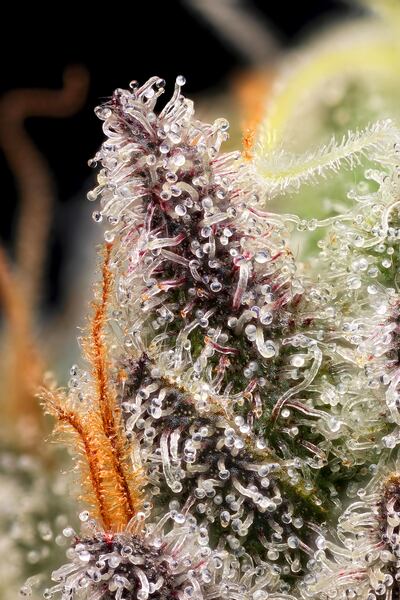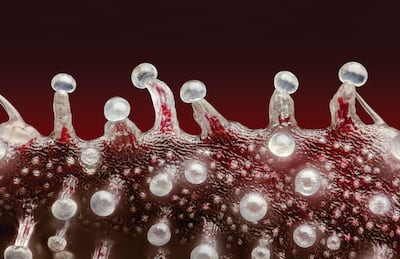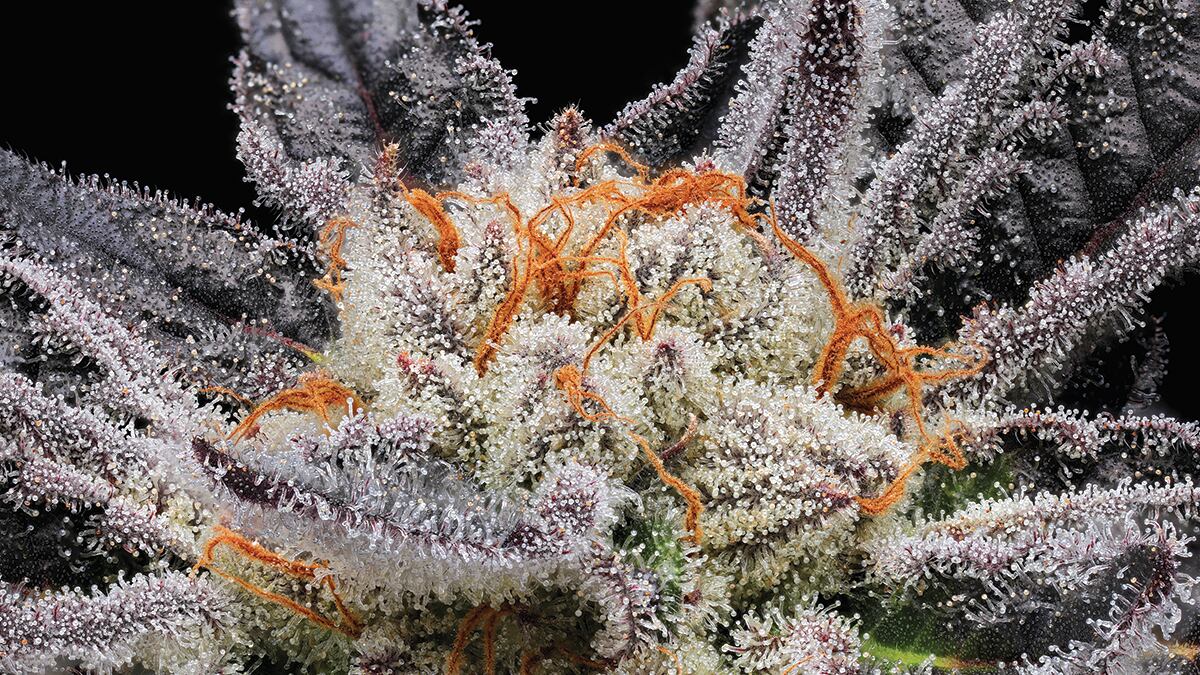If there were a Ph.D. program for cannabis photography, Erik Christiansen’s Nugshots series would feature first on the syllabus.
His high-tech macroscapes of cannabis buds and their minuscule biologies, make glassy trichomes seem more like alien appendages than things grown from this earth.
Christiansen’s technique has become so advanced—and so methodical—that some of his single-second panoramas are constructed with stacks of shots.
“Like 400-plus pictures,” Christiansen tells WW.
When he photographs now, he keeps a closed set because he’s run into proprietary issues, though it seems to embarrass him to relate this: “It’s like I was saying, macro stuff is really tricky, so if people see the adjustments I have on my camera—I mean, it just makes sense that they’d want to put those on theirs.”
A full-time cannabis photographer since 2015, Christiansen has been photographing buds for over a decade. He says he began experimenting with cannabis photography in 2009.
“I had just started getting into cannabis, but I had a couple friends who were way more knowledgeable than I was. They bought some buds that were, like, super purple—just mind-blowing—and I had to take a picture of it,” he says.
“When I got it under the lens, the first thing I noticed was I could barely get anything in focus. The depth of field was so shallow. So, that kind of sent me down a rabbit hole of focus stacking, which is integral to all my macro work. I’m basically taking multiple pictures at different focus points, then combining them together on the computer to unlock a depth of field that you’d normally never be able to capture with a single shot.”

Christiansen’s methodical approach to macro lens photography exposes our favorite psychoactive plant at a level of detail that seems like it would assist whole new worlds of study about the attractive plants.
However, strangely enough, there isn’t much useful information conveyed by a bud’s beauty.
“When I started out, I didn’t really understand where the diversity between nugs was coming from. The same strain from different growers had so many differences. Even the same strain and same growers—but one grown indoors? One of them grown in a greenhouse? They look totally different,” Christiansen explains.
“Now I know that most of the look comes from the growing style. Cold at the end of the growing cycle can cause more purple. It doesn’t really mean much.”
Still, even though he wasn’t unlocking new secrets of cannabis classification, Christensen remained transfixed, still figuring out to photograph what he would soon start to call Nugshots— “just for the beauty, per se, it was more the beauty.”
That beauty shines through in his 2015 photo collection, Green: A Field Guide to Marijuana. Presented against inky black backgrounds, cannabis trichomes, terpene- and cannabinoid-filled tentacles, layer an entire kush flower, appearing as filaments or fine hairs to the naked eye.

Green and its 2017 sequel, Green: A Pocket Guide to Pot, both capture the wondrous multitudes of dried flower. But Christiansen noted with excitement that his upcoming 2022 book, Higher: The Lore, Legends, and Legacy of Cannabis, will be composed entirely of photos of live plants.
“A lot of those [dried flower] photos are from earlier in my career when I had to go to the dispensary to find buds. Back then, I would ask the budtender if I could pick out the particular nugget that I thought looked best. A lot of the time, they didn’t let me do that,” Christiansen laughs.
“Bud that goes through more hands sort of loses a little bit of the luster compared to the live plants. Live plants, the colors just pop. I think the colors will or the pictures will just be a lot more interesting. In the next book.”
These days, Christiansen finds himself gravitating toward indoor-grown buds. He’s always preferred indoor photo shoots.
The initial process of capture can be hourslong and arduous, requiring Christiansen to take hundreds of focused shots at every angle of a 360-degree rotation. “When you’re that close up, somebody walking on the other side of the room can introduce vibration that can completely ruin the shot.”
Thorugh Christiansen’s work we get to these microcosms of the canna-universe, we restudy them as miracles in the biological realm. We contemplate the connection between our recreational stonership and the delicate chemistry that takes place in the cells of our blessed green. Within an inelegant morsel lies unexpected beauty; this is the visual lesson Christiansen will not let us forget.
Six Oregonians Whose Hard Work Brings Cannabis to Your Door
What’s Ethical Weed and How Do You Find It?
How Does Photographer Erik Christiansen Capture Marijuana at its Most Microscopic?
Five Common Accreditations You’ll Find on Cannabis Packaging and What They Mean For You

